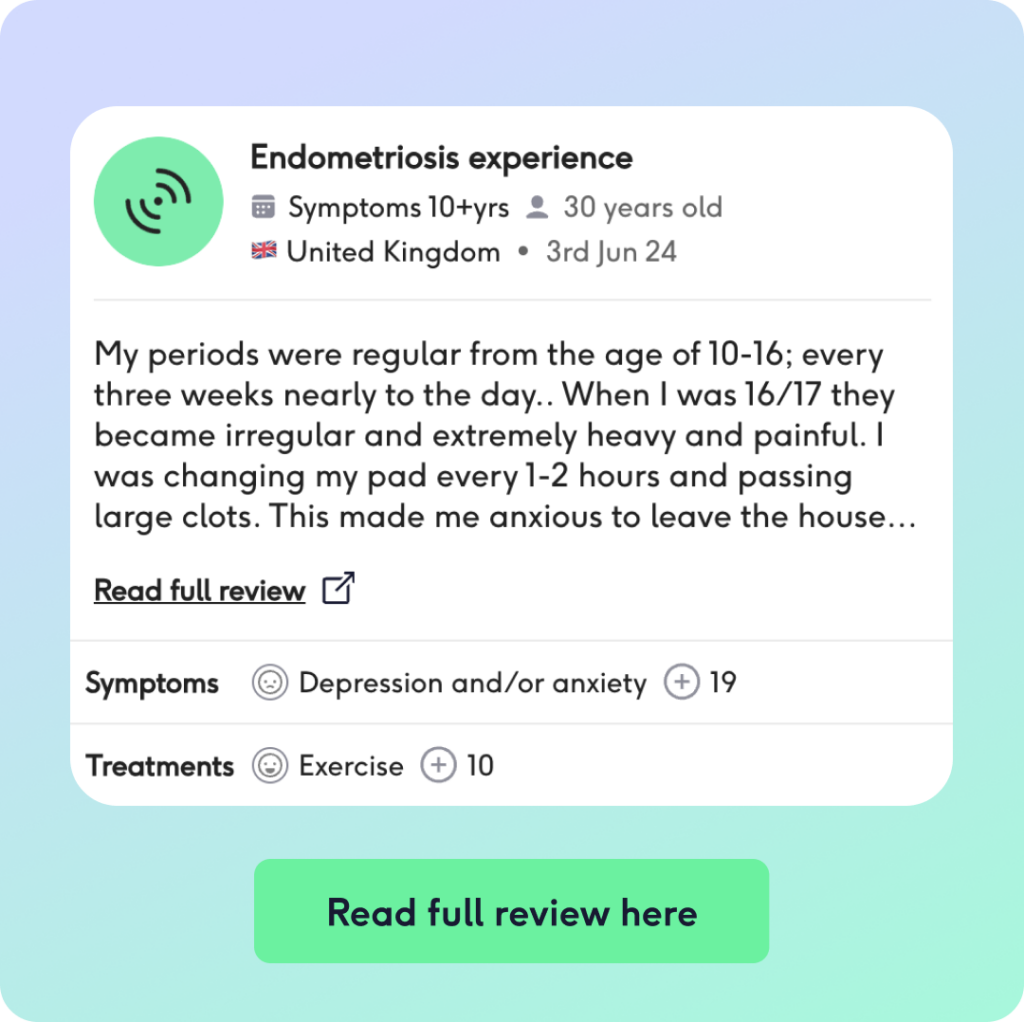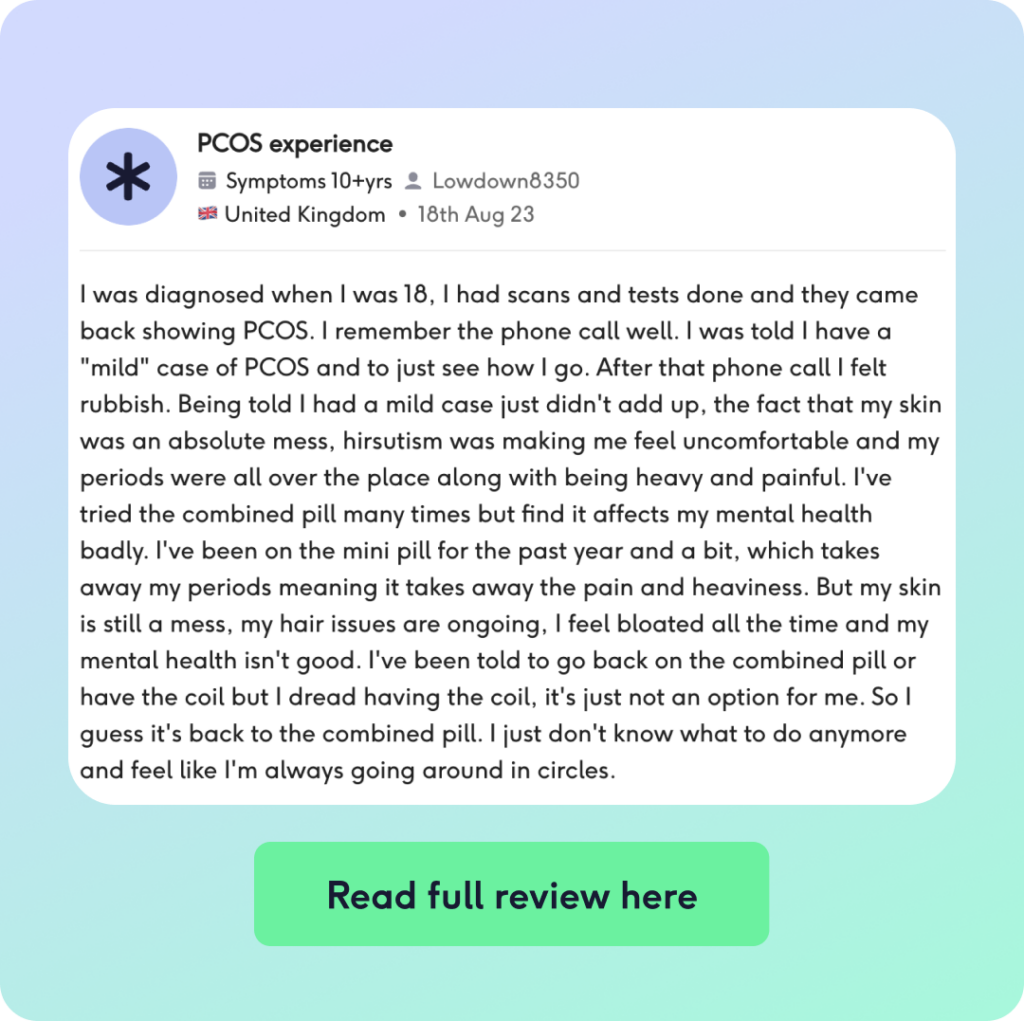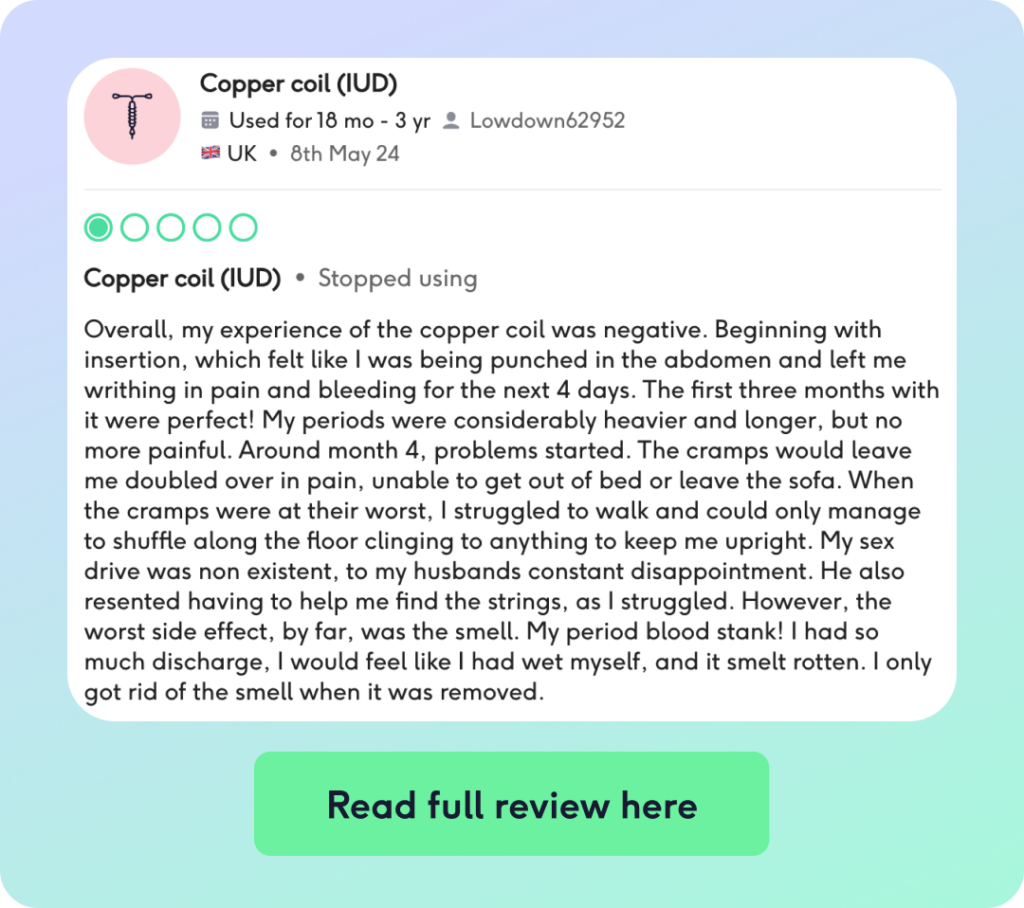
What can cause painful periods?
In this article
What's the lowdown?
Painful periods can severely affect a person’s quality of life
Sometimes painful periods can occur due to high levels of prostaglandins produced by the body or are caused by a gynaecological condition
There are multiple treatments for painful periods ranging from oral medications, hormonal contraception or heat therapies
What are painful periods?
Painful periods are not just an excuse to get out of gym class. They can severely impact a person’s life, interfering with the days leading up to and during their period. A study looking at over 400 women found over 80% of them complain of period pain, 43% of whom experience it with every menstrual cycle1. The medical term for painful periods is dysmenorrhoea.
Dysmenorrhea, or painful periods, can be a “normal” part of menstruation or is triggered by an underlying gynaecological condition.
When we approach our period, our uterus (womb) produces natural hormone-like chemicals called prostaglandins. These prostaglandins tell the muscles of the womb to contract to squeeze out the womb lining but at the same time also constrict the blood vessels. If the blood vessels are squeezed, less oxygen reaches to womb muscle which leads to period pain2.
The 2 types of painful periods3 are:
- Primary dysmenorrhea: This type of period pain is linked to the concentration of prostaglandins produced by the endometrial tissue in the womb. The higher the level of prostaglandins, the more severe the contractions leading to increased severity in pain3.
- Secondary dysmenorrhea: When there is an underlying gynaecological condition causing period pain, it is considered secondary dysmenorrhea. On top of pain, people might experience other symptoms such as painful sex, heavy periods, bleeding between periods and/or after sex.
What causes painful periods?
The causes of painful periods2,3 can include:
- Endometriosis
- Adenomyosis
- Fibroids
- Pelvic inflammatory disease (PID)
- Copper IUD contraception
Let’s break these down!
Endometriosis Period Pain
A condition as common as diabetes but not spoken about enough, endometriosis affects over 1.5 million women and those assigned females at birth (AFABs) and takes, on average, over 8 years to get a diagnosis4.
In endometriosis, cells similar to the womb lining (endometrial lining), which is supposed to stay confined to the womb, are also found in other places of the body such as the fallopian tubes, ovaries and bowel.
These extra endometrial tissues react in the same way to our hormones, growing and then shedding. However, as there is nowhere for the blood to go, it collects in different areas of the body and causes an inflammatory reaction5 and scarring. Hello, pain and bloating!
Adenomyosis Period Pain
Similar to endometriosis, adenomyosis6 is a condition where the womb lining digs into the muscular layer of the womb. The endometrial tissue in the muscular layer then acts in the same way, growing and shedding. Usually, with adenomyosis, periods are also very heavy!
Fibroid Period Pain
Fibroids7 are benign growths in the womb cavity made of muscle and connective tissue. However, fibroids can cause some difficult symptoms that may impact your life such as heavy periods, bloating, abdominal pressure, constipation and can also cause pain.
Polycystic ovarian syndrome period pain
PCOS8 is a triad of irregular periods, high levels of androgens (like testosterone) and ovaries with multiple follicles on an ultrasound scan. Common symptoms of PCOS are irregular or absent periods, male-like hair growth, acne, weight gain and fertility issues. International guidelines do not mention period pain as a symptom….9 However, does PCOS cause painful periods? Let’s see what the Lowdown PCOS community has to say!
Copper IUD painful periods
The IUD is an intrauterine device, also known as a copper coil, that releases a small amount of copper in the womb over time. The copper causes an inflammatory reaction in the womb, making it an un-ideal environment for the sperm to swim to the egg10. While it is 99% effective, heavy and painful periods are a common noted side effect of this contraceptive type11.
Pelvic inflammatory disease (PID)
When a sexually transmitted infection (STI) is left untreated, it can spread up the reproductive tract, causing infection and inflammation known as PID12. If you have PID, there is widespread inflammation of the reproductive tract, which can worsen menstrual cramping and result in painful urination and sexual intercourse, painful and heavy periods and offensive vaginal discharge.
When do I book a GP appointment for my period pain?
No one should live in pain. Yes, periods are a natural part of being a woman but they should not take over our life. If the pain is interfering with your functioning, relationships or work/school, please reach out for help. Either go to your GP or speak to one of our amazing doctors here at the Lowdown.
We will talk through your symptoms, understand what might be exacerbating your period pains and find a treatment that suits you best.
Your health matters, take the first step and ask for help, we will guide you through the rest!
PS: If you have PCOS or endometriosis and want to share more about how you manage your painful periods, leave a review on our platform that can change the lives of countless other women!
Our medical review process
This article has been medically reviewed for factual and up to date information by a Lowdown doctor.






